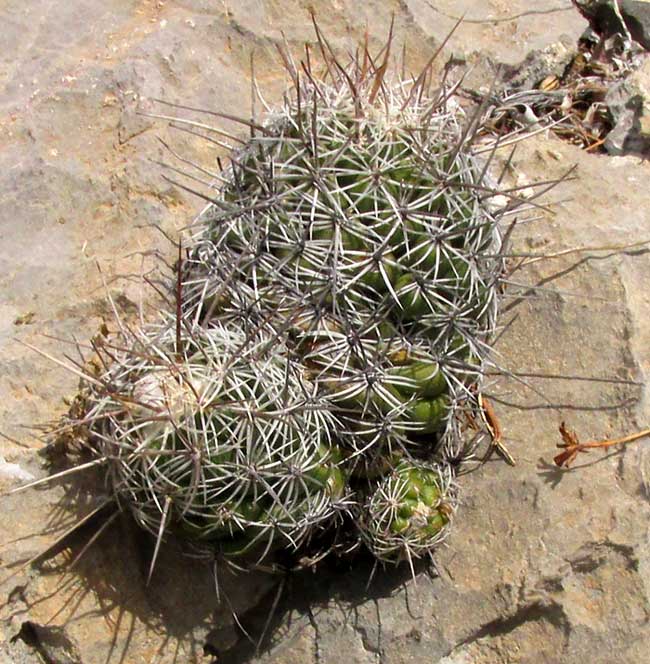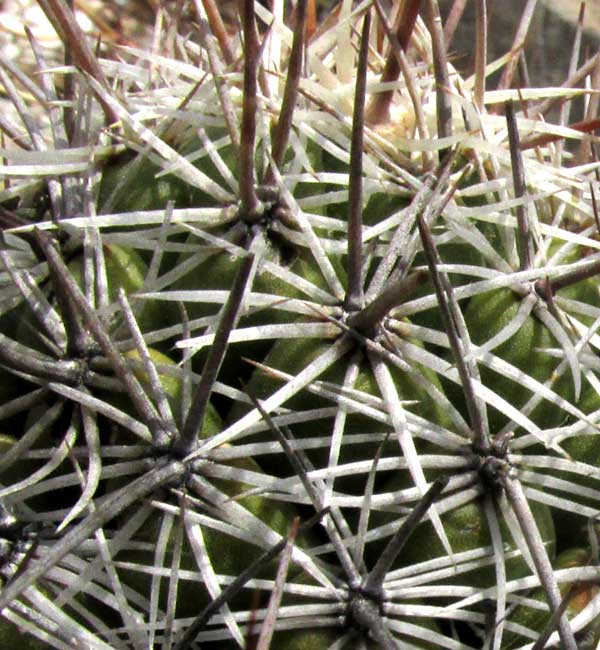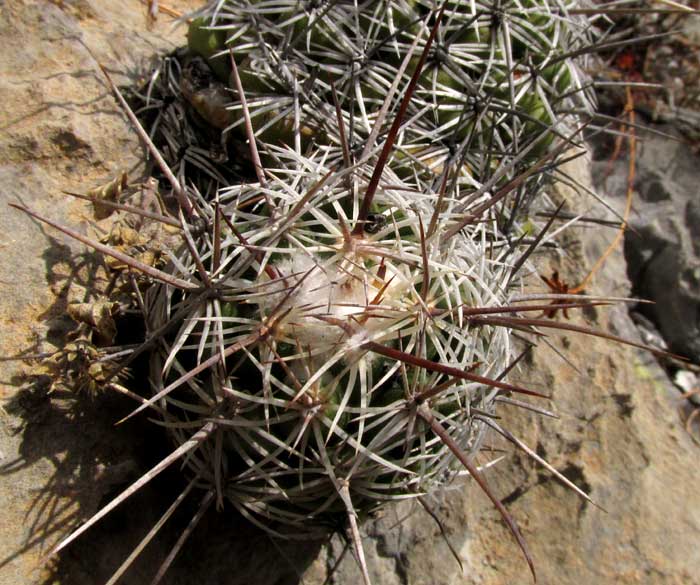Excerpts from Jim Conrad's
Naturalist Newsletter
from the May 31, 2018 Newsletter with field notes from a camping trip on April 5th, 2008, into mountains east of Saltillo, Coahuila, northeastern MÉXICO
CORYPHANTHA CACTUS
Last April 5th in the mountains east of Saltillo, Coahuila, I started out hiking on a valley floor, and climbed a small limestone mountain that was grassy and scrubby at its base, but forested on top. Toward the top, at ±7000 feet in elevation (2100m), where trees were just starting to appear, I found growing in a crack in naked limestone the little family of cacti shown below:

You can see that this species is of the kind whose body looks like a cluster of green chili peppers all turned with their rounded ends facing outward, and those ends bear clusters of spines. Below, this species' spine clusters are shown close up

Notice that these clusters consist of two or three "central spines" and that the largest central spine rises ±perpendicular to the lower ones. There's a special word for a cactus spine that's central and stands perpendicular to the surface, which is "porrect," and this species has very well developed, exceptionally long porrect spines. The lower, smaller spines radiating from the cluster base, or "areole," ±horizontal with the cactus's surface, are called "radial spines."
A shot from above showing the cactus's depressed, white-woolly top is shown below:

Several cactus species with chili-pepper-cluster bodies and spine clusters with similar central and radial spines occur in northeastern Mexico's uplands. However, with the help of Alfredo Flores' Guía de Cactáceas del Estado de Coahuila , I was able to figure it out, thanks especially to this species' unusually long central spines, and the fact that the lower central spines typically curve downward -- which you can confirm in the first picture.
Flores lists our cactus as Coryphantha roederiana, but most experts seem to agree that that's a synonym for CORYPHANTHA SALINENSIS. One problem with the naming is that the dried, preserved and stored type specimen from which the species was formally described in a German periodical in 1929 was destroyed, so the species can no longer be positively identified.
The species Coryphantha salinensis is endemic to the arid uplands of northeastern Mexico, in the states of Coahuila, Nuevo León and Tamaulipas. It occurs with desert scrub not only on limestone rock but also in alluvial plains and limestone gravel. It's said to be common over its limited distribution area and though large populations are being destroyed by ranching and urban sprawl, it isn't considered yet to be endangered.